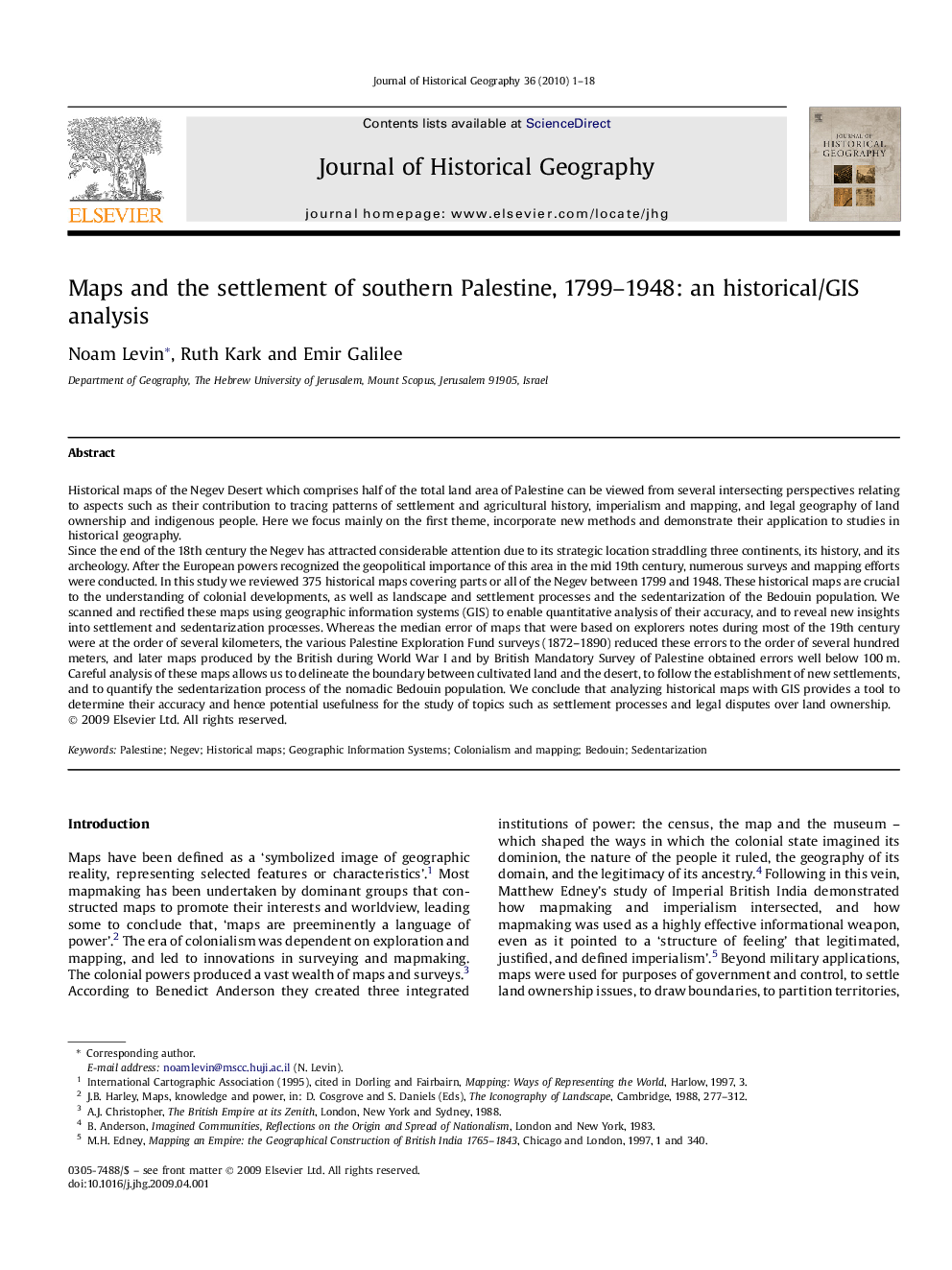| کد مقاله | کد نشریه | سال انتشار | مقاله انگلیسی | نسخه تمام متن |
|---|---|---|---|---|
| 1039323 | 944295 | 2010 | 18 صفحه PDF | دانلود رایگان |

Historical maps of the Negev Desert which comprises half of the total land area of Palestine can be viewed from several intersecting perspectives relating to aspects such as their contribution to tracing patterns of settlement and agricultural history, imperialism and mapping, and legal geography of land ownership and indigenous people. Here we focus mainly on the first theme, incorporate new methods and demonstrate their application to studies in historical geography.Since the end of the 18th century the Negev has attracted considerable attention due to its strategic location straddling three continents, its history, and its archeology. After the European powers recognized the geopolitical importance of this area in the mid 19th century, numerous surveys and mapping efforts were conducted. In this study we reviewed 375 historical maps covering parts or all of the Negev between 1799 and 1948. These historical maps are crucial to the understanding of colonial developments, as well as landscape and settlement processes and the sedentarization of the Bedouin population. We scanned and rectified these maps using geographic information systems (GIS) to enable quantitative analysis of their accuracy, and to reveal new insights into settlement and sedentarization processes. Whereas the median error of maps that were based on explorers notes during most of the 19th century were at the order of several kilometers, the various Palestine Exploration Fund surveys (1872–1890) reduced these errors to the order of several hundred meters, and later maps produced by the British during World War I and by British Mandatory Survey of Palestine obtained errors well below 100 m. Careful analysis of these maps allows us to delineate the boundary between cultivated land and the desert, to follow the establishment of new settlements, and to quantify the sedentarization process of the nomadic Bedouin population. We conclude that analyzing historical maps with GIS provides a tool to determine their accuracy and hence potential usefulness for the study of topics such as settlement processes and legal disputes over land ownership.
Journal: Journal of Historical Geography - Volume 36, Issue 1, January 2010, Pages 1–18